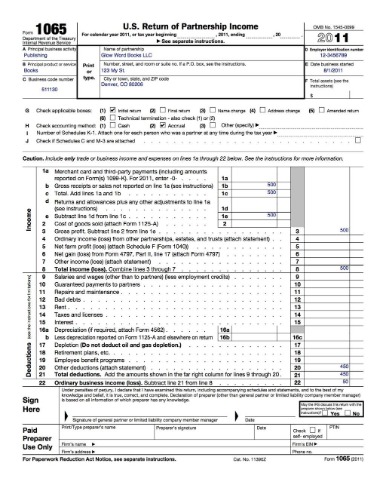Content

You can confirm the new mileage rate for 2022 on the official IRS website. As part of a move for which the expenses are deductible under IRC §217 . A site devoted to articles on current developments in federal taxes geared toward CPAs in tax practice. You’ll need to show the beginning and ending mileage, the business or medical purpose for the trip and the date in your logbook. But realistically, very few people keep these kinds of records, she said.
Along with Irs Releases 2020 Standard Mileage Rates s, vans, pickup tucks, or panel trucks powered by gasoline and diesel, these prices also apply to hybrid and electric vehicles. This information is provided as a courtesy, may change and is not intended as legal or tax guidance. Employers with questions or concerns outside the scope of a Payroll Service Provider are encouraged to seek the advice of a qualified CPA, Tax Attorney or Advisor. This material has been prepared for informational purposes only, and is not intended to provide, and should not be relied upon for, legal, tax or accounting advice. If you have any legal or tax questions regarding this content or related issues, then you should consult with your professional legal, tax or accounting advisor.
Midyear mileage changes are ‘unusual’
The same lower rate applies to use of an automobile for a move that is deductible under Code § 217. For taxable years beginning after 2017 and before 2026, however, the moving expense deduction is available only for certain moves by members of the Armed Forces on active duty . The 2020 rate for charitable use of an automobile is 14 cents per mile. The standard mileage rate for business use is based on an annual study of the fixed and variable costs of operating an automobile. The rate for medical and moving purposes is based on the variable costs. To come up with these standard mileage rates, the IRS extrapolates Runzheimer International’s yearly data, which captures auto data variables, such as depreciation, maintenance costs, insurance, and other costs involved in operating a vehicle.
From Jul 1, 2022 the https://intuit-payroll.org/ increases with 4 cents to 62.5 cents per mile for business purposes. However, if an employee can show that the chosen mileage reimbursement rate, even the IRS rate, does not cover all actual expenses the employee has incurred, the employer must pay the difference.
Standard Mileage Rates
In 2020, 27 cents of the 57.5 cents per mile rate accounted for the costs of depreciation. An automobile’s fixed and variable costs of driving are used to determine a business standard mileage rate. If you want to use the standard mileage rate method in any tax year, you must do so in the first tax year you use your car for business. In later years you can choose to switch back and forth between the methods from year to year. Each year, you’ll want to calculate your expenses both ways and then choose the method that yields the larger deduction and greater tax benefit to you. If you use the actual expense method in the first year you are required to continue to use this method for that specific vehicle in future years. The expenses that the standard mileage rate is meant to cover include all fixed and variable expenses such as the lease payment, gas, oil, insurance, license and registration fees, depreciation and other maintenance and repair expenses.
- He is able to deduct the visits that are not covered in his health plan provided by his employer.
- The cents-per-mile rule determines the value of personal use by multiplying the business standard mileage rate by the number of miles driven for personal purposes.
- Under FAVR, employees who drive their own vehicles can receive tax-free reimbursements from their employers for fixed vehicle costs and variable vehicle expenses , instead of the standard mileage rate.
- Similarly, most taxpayers can no longer claim a deduction for moving expenses.
- When claiming a business deduction for mileage expense don’t ever fall into the SALY trap.
The standard mileage rate for computing the deductible costs of operating an automobile for charitable purposes is set by statute and also remains unchanged. On December 31, 2019 the Internal Revenue Service finally issued the 2020 optional standard mileage rates used to calculate the deductible costs of operating an automobile for business, charitable, medical or moving purposes. If you’re wondering about the difference in the rates for business and medical or moving purposes, there is a reason. The standard mileage rate for business is calculated by using an annual study of the fixed and variable costs of operating an automobile, including depreciation, insurance, repairs, tires, maintenance, gas, and oil. In contrast, the rate for medical and moving purposes is based just on the variable costs. The IRS has issued the 2020 optional standard mileage rates used to calculate the deductible costs of operating an automobile for business, charitable, medical or moving purposes. The IRS has announced the 2020 standard mileage rates for business, medical, and other uses of an automobile, and the 2020 vehicle values that limit the application of certain rules for valuing an automobile’s use.
Mileage Tracker App
In any case, it is useful to know the mileage rate for 2022 because anything you reimburse above it will be taxed. “We’re currently facing extraordinary economic volatility, which has contributed to wide fluctuations across vehicle costs,” said Todd Gebski, Motus’ chief strategy and marketing officer. Motus noted that gas prices rose 49 percent for regular gasoline and 55 percent for diesel fuel over the first six months of 2022. Although gas prices dropped recently, with 26 states reporting gas prices below $3 a gallon, according to fuel savings platform GasBuddy, prices are expected to go back up next year.
The standard mileage rate for business, which takes effect Jan. 1, 2020, is based on an annual study of the fixed and variable costs of operating an automobile. Employees may use the standard mileage rate as an alternative to accounting for actual operating and fixed expenses. The standard mileage rate for automobile business purposes is based on both fixed and variable costs of using a vehicle, while medical and moving rates are only based on the variable costs of car driving. Accordingly, the business standard mileage rate for 2020 cannot be used to claim an itemized deduction for unreimbursed employee travel expenses. However, deductions for expenses that are deductible in determining AGI for various calculations are not suspended.
Internal Revenue Service to be used by taxpayers to calculate the allowable deduction for using business automobiles. In this example, the Uber driver-partner is able to deduct $1,725 more by using the actual expenses method than by using the standard mileage rate method. Taxpayers also have the option to calculate actual costs, which involves deducting a percentage of the vehicles’ total expenses. If you choose the standard mileage rate method, you will need to track your miles to calculate the year-end deduction. For that, an automatic mileage tracker app is strongly recommended, as you can save yourself plenty of hours when automatically logging your 1000+ trips/month compared to tracking your miles on paper or an Excel sheet. To use the standard mileage rate for a vehicle, you have to choose this method in the first year of using your car in your business.












